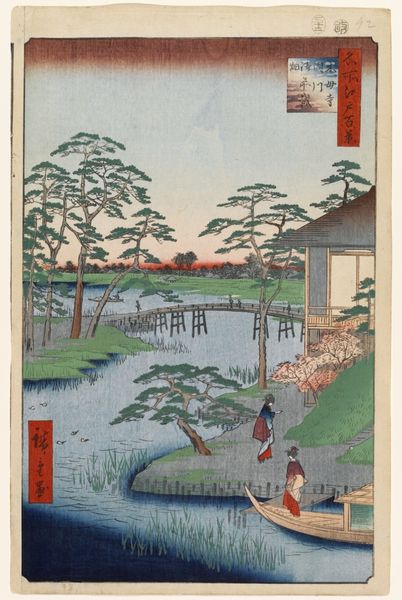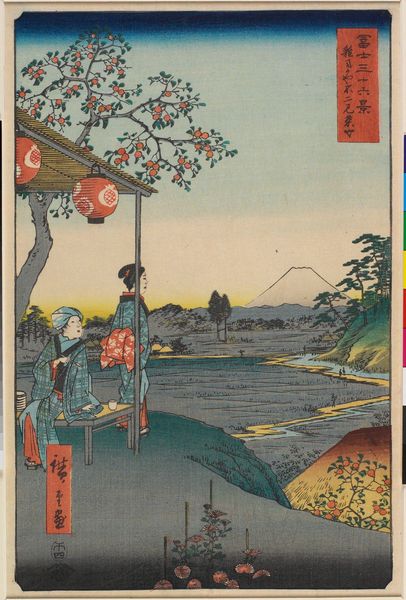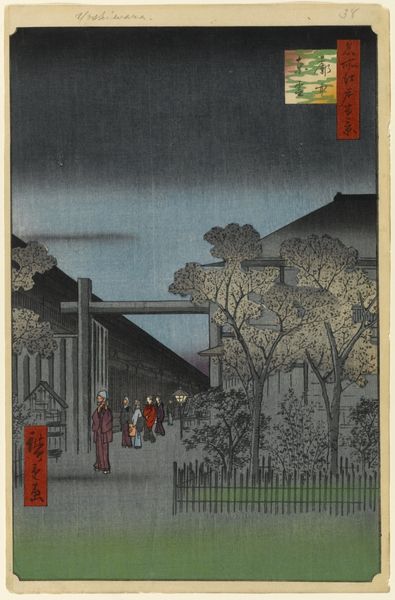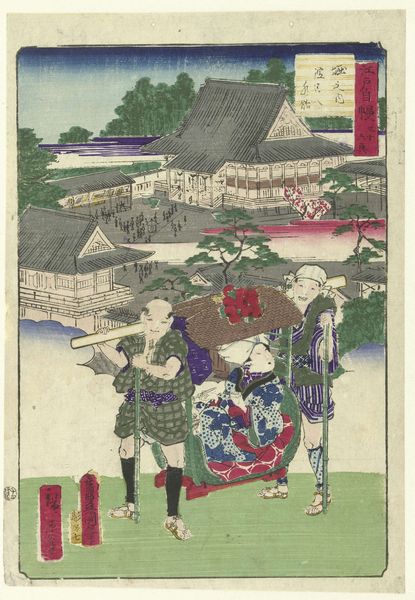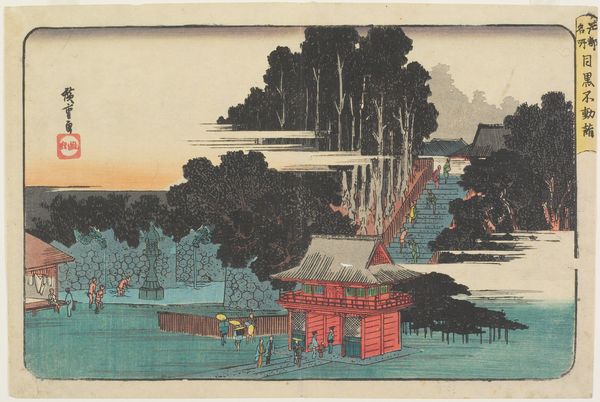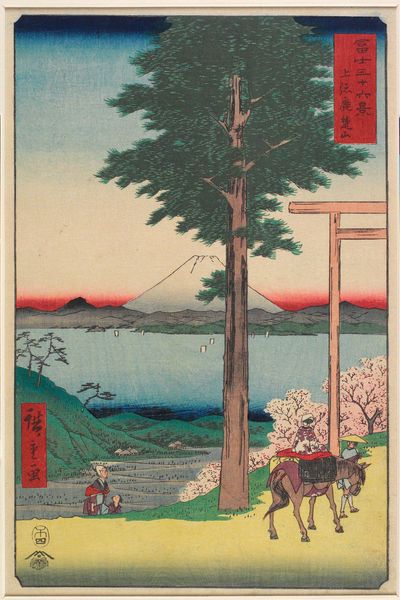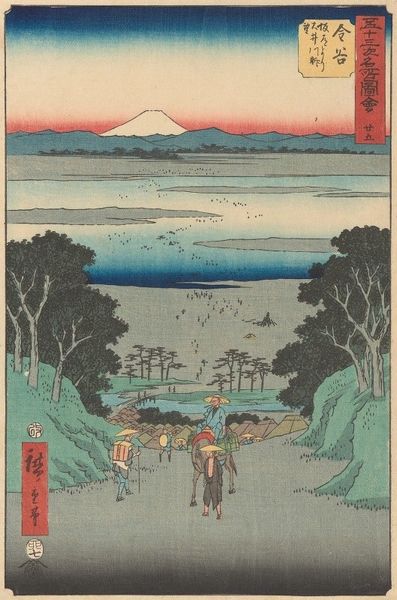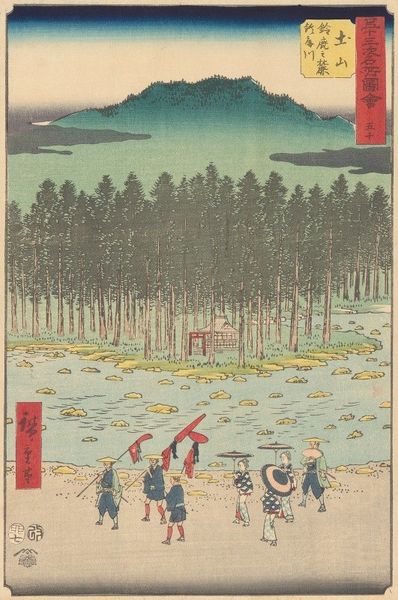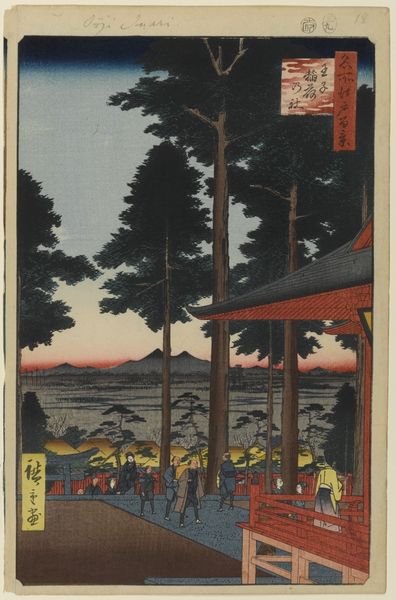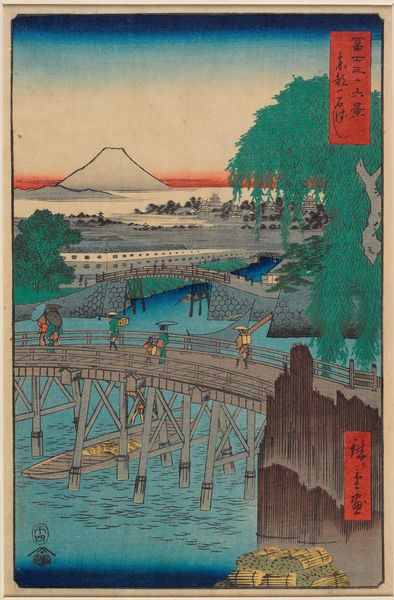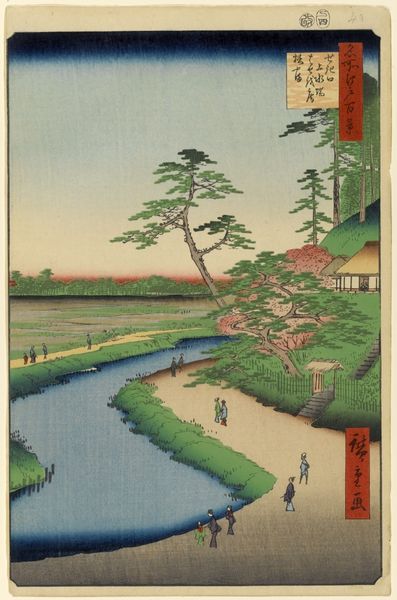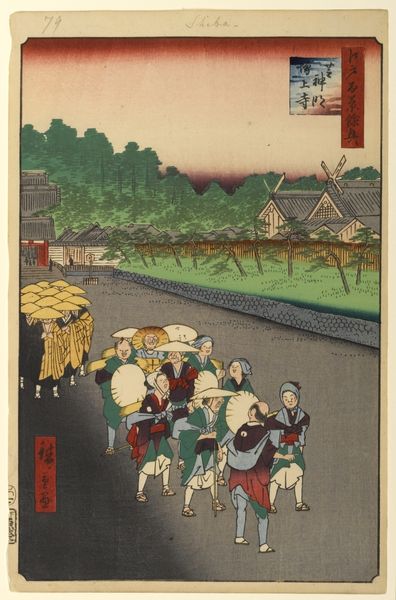
print, woodblock-print
#
water colours
# print
#
landscape
#
ukiyo-e
#
figuration
#
coloured pencil
#
woodblock-print
#
genre-painting
#
watercolor
Copyright: Public domain
Curator: This woodblock print, "Kinokuni Hill and Distant View of Akasaka and the Tameike Pond," was created by Utagawa Hiroshige in 1857. What's your initial take? Editor: Stark. There’s a distinct flatness to it, a deliberate simplification of form. It almost feels…monumental in its quiet way. Curator: It’s interesting you say that, because Hiroshige's landscapes often seem placid, even picturesque. But there's a definite sense of the human condition layered here, wouldn’t you agree? The procession... are they pilgrims, or perhaps labourers on their way to an uncertain future? The tension between the beauty of the sunset and the stoicism of the figures… It speaks volumes. Editor: Yes, precisely! And to zoom in a little further into that historical moment. Hiroshige created this work in the late Edo period. Famine plagued the land and there were sweeping socio-economic transformations which generated social unease. In many ways, you could argue that the people walking reflect some of this widespread precariousness. Curator: Precisely! Hiroshige often employed the *ukiyo-e* style, "pictures of the floating world", celebrating transient beauty. But the tension that underscores that phrase is palpable here, isn't it? The "floating world" wasn't always light. It could be oppressive. You almost get the sense it could sink anytime now... Editor: Absolutely. Think of the way the woodblock technique, with its crisp lines and flat colors, almost forces us to confront the raw reality. And that single figure in the front? He stands alone, a silhouette of quiet strength facing a pink sky that may portend a dawn. He stands at the vanguard, literally carrying some pole or sign. Curator: He practically shoulders that horizon! I do get the feeling though, that at a time when anything could occur, Hiroshige’s art subtly asked difficult questions about the ruling and the to-be-ruled. Editor: Yes! Even if unintentionally, a beautiful meditation that makes us want to ponder the human condition… and the long shadows it throws. Curator: Thank you. I love a little bit of tension in the landscape to think about, you know?
Comments
No comments
Be the first to comment and join the conversation on the ultimate creative platform.
